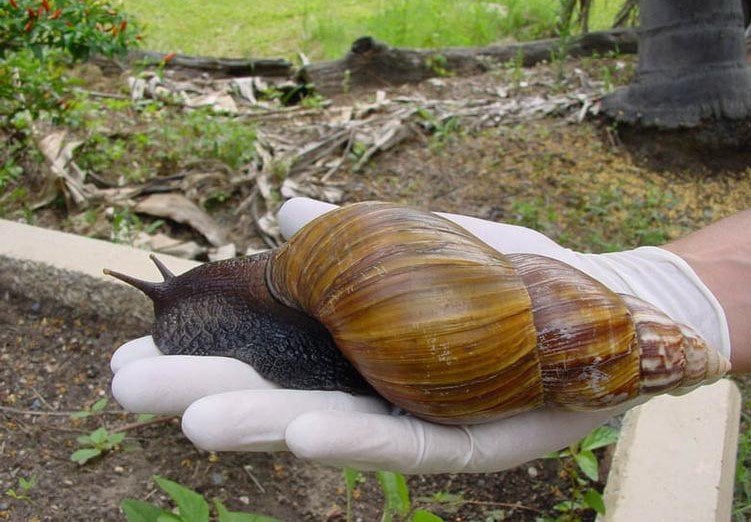
The giant African land snail (GALS) has returned to Florida for a third time. The invasive species was first detected in the state in 1969. It took seven years and $1 million to get rid of them. The gastropods reappeared in 2011 and were eradicated in 2021 at a cost of $23 million. On June 23, 2022, Florida officials reported that the snails had been found in the New Port Richey area of Pasco County.
To stop the snails from spreading to other areas, officials have asked Pasco County residents to refrain from moving any soil or yard waste and to report any sightings to a special hotline. Specially-trained dogs have also been brought in to sniff out the snails. The areas where the mollusks have been found will be treated with a special pesticide for 18 months. Florida officials also intend to monitor the sites for two years after the last snail has been found.

The various measures to eradicate the snails may seem excessive. However, the giant African land snails are one of the most destructive snails in the world. The fist-sized mollusks are native to East Africa but can also be found in Hawaii and the Caribbean. The voracious eaters consume over 500 plant and tree species. While they prefer to eat fruits and vegetables like beans, peas, cucumbers, and melons, the animals are not fussy. They will munch on ornamental plants, tree bark, and even paint and stucco on houses! The animals also pose a serious health risk to humans by carrying the parasite rat lungworm, known to cause meningitis. The snails multiply rapidly, producing about 1,200 eggs in a single year. This makes it challenging to control their population.

Greg Hodges, the assistant director of the state's division of plant industry, says the latest specimens differ from the ones previously found. They have light cream-colored bodies with a dark, mottled brown shell.
"The populations that we dealt with in the previous two eradications had dark gray to brown bodies," he explained. "This cream-colored phenotype is very common in the pet trade in Europe and has been intercepted here in Florida previously with the illegal pet trade."
The officials are not sure how the snails got here this time. But Florida Agriculture Commissioner Nikki Fried is confident the state will eventually get rid of them.
"Because agriculture is such a prominent part of our economics in the state, it is so imperative we get in front of these things immediately," Fried said at her July 7, 2022 press briefing. "Let me assure you: We will eradicate these snails. We have done it twice before, and we will do it again – it is not a question of if, it's just when."
Resources: Fdacs.gov, Smithsonianmag.com, euronews.com
